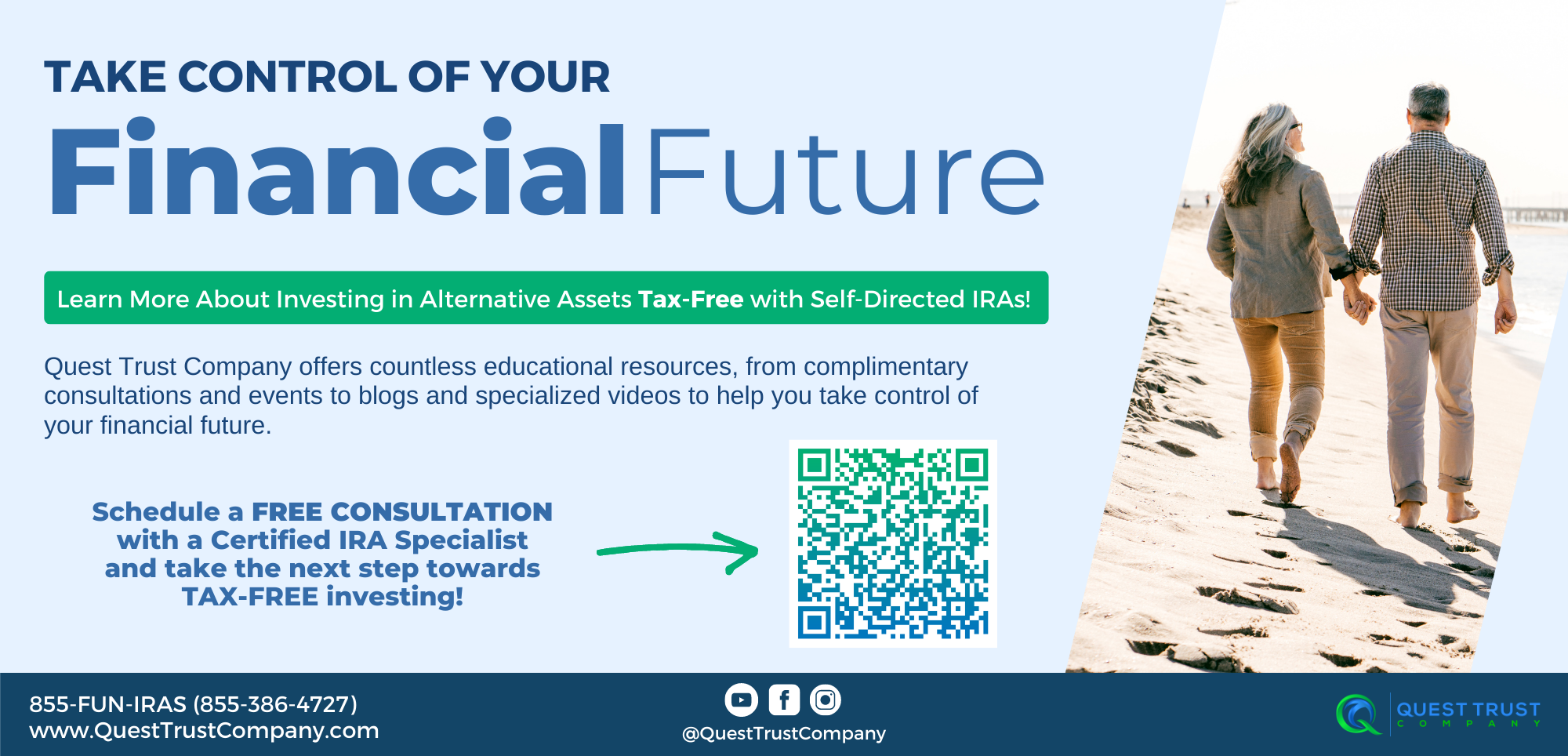Latest SECURE Act Updates You Need to Know for 2023 and Beyond
While most of us spent the Christmas holiday eating fruit cake, opening presents, and spending time with the ones we love, Congress was busy making decisions that would affect SDIRA account holders. If you haven’t heard yet, Congress has passed a massive piece of retirement legislation that will have a significant impact on IRAs and the entire retirement industry. The SECURE 2.0 is a collection of provisions intended to build on the SECURE act of 2019. The act was part of a 1.7 trillion omnibus spending Congress approved right at the end of 2022.
While this blog won’t cover everything, we will highlight the main points and significant changes that our specialists here at Quest believe are the most crucial for alternative investors to know about.
How Does This Affect Retirement Accounts?
Self-Directed IRAs and 401(k)s alike will be affected by the SECURE Act 2.0. Some changes you can expect to see are in regard to Required Minimum Distributions and other distributions, contributions, and prohibited transactions. Other things to be aware of will be changes to enrollment and employer matching for 401(k) holders, finding lost benefits, and Saver’s Credit.
RMDs/Distributions
One of the biggest changes is the increase for Required Minimum Distribution age, which was 72. The age increased to 73 effective in 2023. If you turned 72 in 2022 or earlier you still have to take your 2022 RMD. It’s also important to note that the RMD age will increase to 75 in 2033.
The penalty for not taking an RMD has also been lowered from 50% to 25% (or 10% if corrected in a timely manner), and there will be no more in-plan RMDs for Roth funds in 401(k)s starting in 2024. For distributions, there is no penalty tax on distributions of income on excess IRA contributions.
Contributions
There are also some changes surrounding contributions, too. One of the most notable changes will be for SEP and SIMPLE IRAs. Before, these accounts could only hold pre-tax contributions. Now, they can hold both pre-tax and post-tax funds. Catch up contributions saw a change, as well. Currently, catch-up contributions are stagnant at $1,000, but with the new act, they will now be indexed with inflation starting in 2024.
401k/General Retirement Accounts
Pre-Secure Act 2.0, employees needed to elect to enroll in a 401(k) plan and then determine their contributions. All new 401(k)s must automatically enroll participants to contribute at least 3% and not more than 10% and automatically increase contributions 1% per year to 10%-15%. Participants can still opt out but this will start in 2025. Another change is that, before the new legislature, the employer matching was strictly based on employee contributions. Now, it allows employers to match student Loan payments into 401(k)s. The act makes changes to the Saver’s Credit, too, effective after December 31, 2026. Saver’s Credit offered a tax deduction for those who participated, and now Saver’s Credit is going to be a matching system that will deposit funds into an individual’s retirement account.
Where employees needed to keep track of all QRP accounts fro
m past employers, that is no longer needed. The Department of Labor will create a Retirement Savings Lost and Found no later than two years after the date of enactment of SECURE 2.0 to help individuals locate their pension or 401(k) benefits.
Prohibited Transactions
The last topic we will cover is about is prohibited transactions. The final bill that passed into law "clarified" to affirm that each IRA is a separate contract. In other words, if you do a prohibited transaction in one IRA, that gets blown up under the regular rules. But this doesn't affect other IRAs of the same person. And, of course, this provides no relief for prohibited transactions done prior to 2023. As Shakespeare would say, this is "much ado about nothing”!
As you can see, there are some very big changes that SDIRA and retirement account holders need to be aware of, and we hope this article is helpful. While it provides a lot of increased opportunities, all situations are different. If you have more questions about the SECURE Act 2.0 changes, you can call our IRA Specialists for more information.

